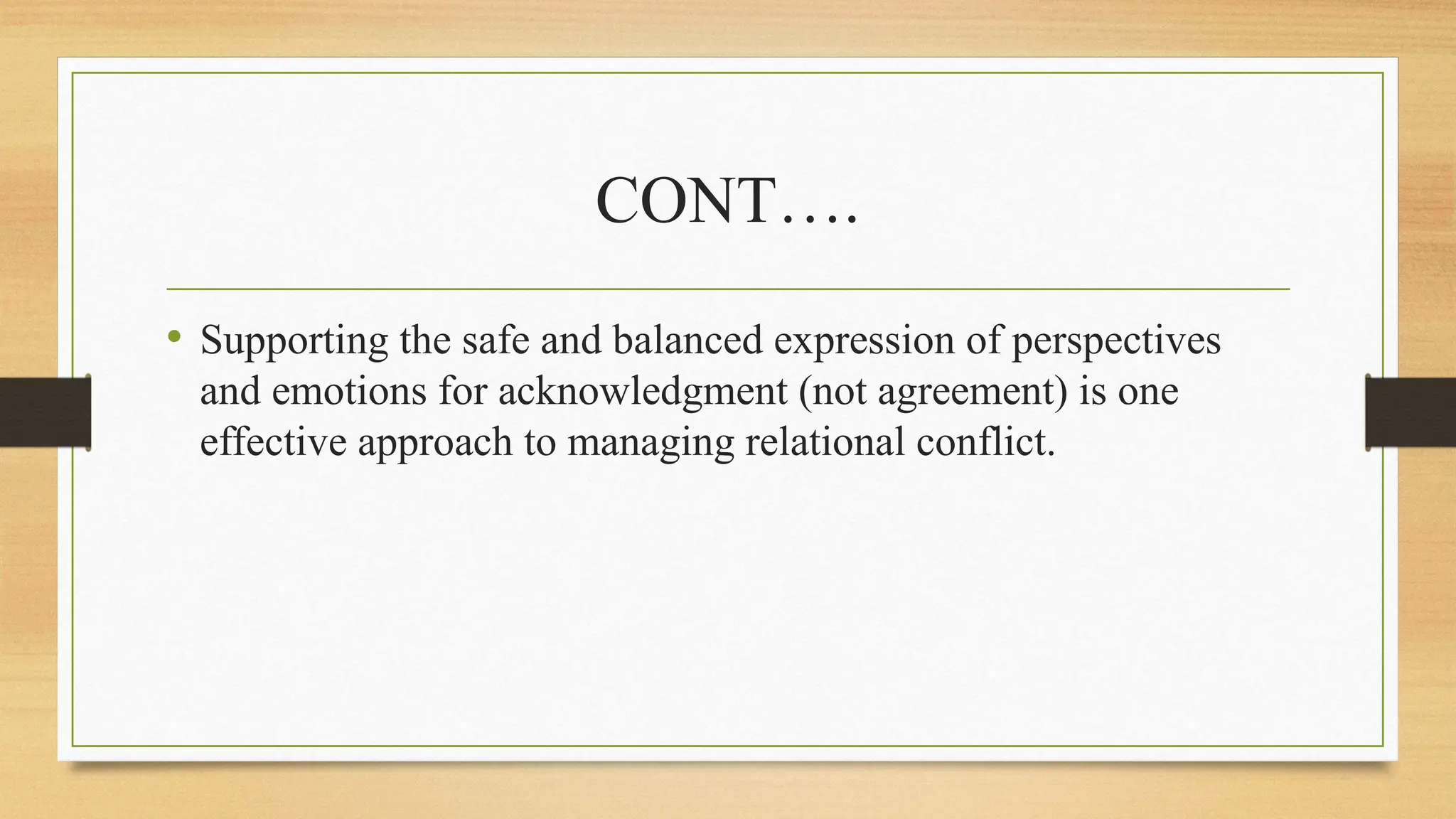This document discusses various types of conflicts, including relationship, data, interest, structural, and value conflicts, particularly within the context of nursing. It emphasizes the importance of acknowledging differences in belief systems and outlines strategies for conflict resolution such as open communication and using mediators. The document also highlights the negative impact of unresolved conflicts on workplace morale and productivity, stressing the need for effective conflict management skills.




























